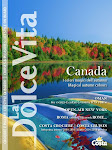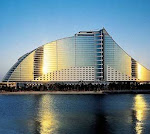Wistfulness for ancient times and desire for progress, battlemented forts and modern architecture, Bedouin villages and creative designer hotels, Islamic culture and equal opportunities. Welcome to Oman, on the extreme south-eastern end of the Arabian peninsula, one of the most fashionable destinations of the moment. From years of being shrouded in total obscurantism, the country has been brought into the future by the hand of an enlightened sultan, Qaboos bin Said, who has given the country a major economic and social impetus by developing an exclusive tourism industry to replace (well, mostly) the revenues that were brought in up to now by oil.
The first port of call is Muscat, once a stop on the trade route from Zanzibar to India and China, so near and yet so far from Dubai. Here, for at least an hour, you can forget palm-tree peninsulas, high-tech glittering skyscrapers and real estate megaprojects. In the city, which is formed by three central suburbs—Old Muscat, Mutrah and Ruwi— separated by rocks forming a physical barrier to urban development, today the traveller can enjoy a sense of measured equilibrium. Grand, three-lane avenues glide between low-rise, residential buildings in neo-Arabic style, carefully-tended gardens, battlemented porticoes, and curious traffic islands shaped like gazelles or khanjars, the traditional Oman daggers with curved blades. Essential and rigorous lines also form the exterior of the Grand Mosque, the only mosque that allows non-Muslims to enter and the interior of which astonishes with its magnificence: comprising five minarets, it holds up to 22,000 people, has an eight-metre-wide Swarovski chandelier and a carpet weighing 21 tons on which 600 women worked for four years. Mutrah, the port zone along the seafront promenade, with its houses built by Portuguese traders and their balconies edged almost like lace, is suffused with an old-world atmosphere. You’ll find more atmosphere in the souk, an essential stop on your tour to shop for incense, spices, essences and jewellery, and in the Museum of Bait al-Zybair, a former residence that today hosts the biggest private collection of local art, and in the Jalali fort, another temple of Oman cultural heritage, but unfortunately not one that is open to the public.
But if this one is inaccessible (it’s still in use by the police, military and diplomatic corps), there are over a thousand other sites that aren’t, including forts, towers and castles. Of these, the Jebreen fort, in the interior region of Dakhiliah, is one of the best preserved, as is the fort at Nizwa, once a major crossroads on the caravan route, where it is customary to peruse the souk square.
But Oman doesn’t end there. There’s the desert, epitomised in Wahiba Sand with dunes up to 200 metres high and bleach-white villages where women still wear the burkha, the fabric mask that leaves just the eyes uncovered. Oman also has crystal clear seas to discover on excursions in traditional dhow lateen sail vessels, perhaps on a dolphin sighting tour, and also in the southern region of Dhofar, on the border with Yemen. This is another Oman: the beaches around Salalah and the natural geysers surging from the rocks astonish visitors against an unexpectedly emerald-green and tropical landscape, watered by southwest monsoons. This is the most renowned place in the world for producing incense: in ancient times, incense resin was so prized that it was given personally, by hand, by the Queen of Sheba to King Solomon. It’s no coincidence that silver frankincense is today one of the ingredients of what is known as “the most precious perfume in the world”: the Amouage brand created in 1983 by the Sultan of Oman. Traditionally offered by the royal family and by the Sultan himself during State visits, it’s sought-after by many Hollywood celebrities as well. Maybe this is another one of the many contrasts of Oman.
Friday, May 29, 2009
Subscribe to:
Post Comments (Atom)














1 comment:
Ive just got into Muscat from Salalah where the temp was about 30c and in Muscat a really hot 50c - so Salalah will soon be the destination as the monsoon starts up.
Post a Comment